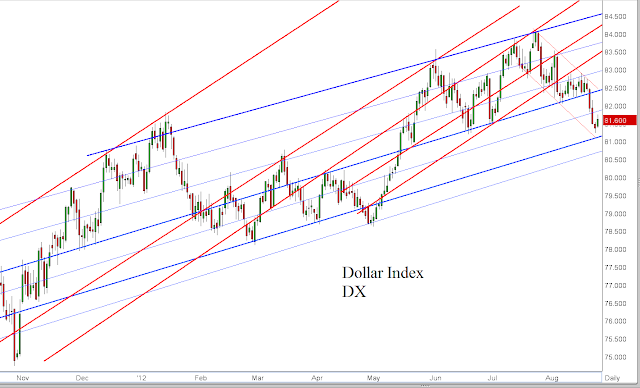Here is the longer term view of the US Dollar as measured by a basket of currencies.
Can it 'break out' here? Yes, certainly. Europe and Japan have their problems, and in the world of fiat, the grading of the paper is done 'on a curve.' The central banks and their mavens, who intervene at least indirectly in the currency markets with a certain obsessiveness these days of non-stop financial engineering, like to shove their manipulation around the plate as well. They don't 'tweak' the economy; they are the economy, at least at the margins.
Can it also fail and break down here? Yes, certainly. A stronger dollar will step hard on the weak US economic recovery. It will serve to lower import prices, but dampen exports, which is what they call 'bad news' when your domestic demand is slack.
There is the fundamental detail an enormous amount of dollars being held overseas that are not in circulation so to speak. At some point they, like the swallows of Capistrano, will return, and have trouble finding a place to comfortably roost.
But the market does not care about our theories, or even the charts. They are just rough estimates of a very complex reality. This is a disclosure that all pundits should place on their prognostications.
And in these days of thin markets and bank prop desks as a major source the income, the fundamentals are less relevant than the short term reality of the squid's need to feed.
Let's see what happens. Then we will know something actionable.















































